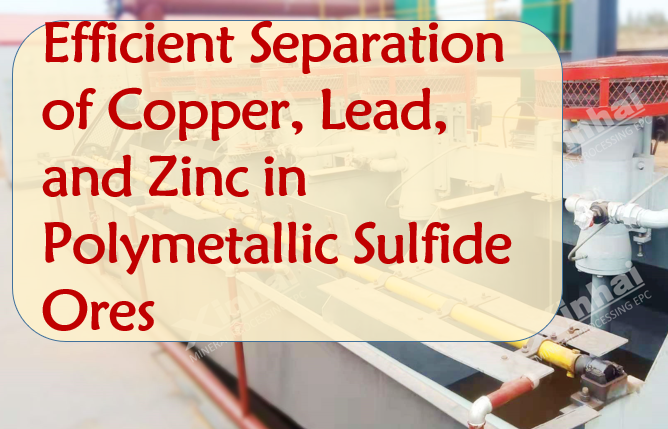Efficient Separation of Copper, Lead, and Zinc in Polymetallic Sulfide Ores: A Technical Overview
2025-08-01 Xinhai (1092)
2025-08-01 Xinhai (1092)
If you have any questions, please contact us through the following ways, we will give you more and better assistance!

Copper-lead-zinc polymetallic sulfide ores are typical complex refractory mineral resources, characterized by intricate intergrowth relationships among valuable minerals. Among them, sphalerite, chalcopyrite, and galena are often embedded in quartz gaps in the form of fine veins or sparse disseminations, making monomer dissociation extremely difficult. Additionally, these ores usually contain a large amount of mica with good floatability, which seriously interferes with the flotation of copper, lead, and zinc minerals and affects the quality of concentrates, further increasing the difficulty of beneficiation.
To address these characteristics, targeted beneficiation processes and reagent systems have been developed. In terms of reagent selection, a collector with good selectivity for chalcopyrite is adopted to ensure the recovery rate of copper and the quality of copper concentrate. Efficient inhibitors are used to suppress mica, effectively separating copper minerals from mica and reducing the interference of mica in the flotation process. For lead and zinc minerals, a combined inhibitor system is applied to achieve effective separation of copper from lead and zinc, ensuring low lead and zinc content in copper concentrate.

In terms of technological processes, an innovative flotation flow has been proposed: preferential copper flotation, rapid lead flotation, and lead-zinc bulk flotation. In the preferential copper flotation stage, two-stage roughing operations are carried out to separate copper, mica, and lead-zinc; meanwhile, scavenging operations are introduced to quickly remove a large amount of mica, significantly reducing the impact of mica on the entire flotation process. Before lead-zinc bulk flotation, a rapid lead flotation operation is innovatively added, which not only obtains high-quality lead concentrate but also does not affect the quality of subsequent lead-zinc concentrate, helping to improve economic benefits.
This integrated process, through the precise collaboration of reagent systems and process design, effectively overcomes the challenges of complex intergrowth, mica interference, and difficult separation in copper-lead-zinc polymetallic sulfide ores. It realizes the efficient recovery of copper, lead, and zinc, providing a reliable technical solution for the comprehensive utilization of such mineral resources.